— On Direct Action: An Address to Cultural Workers
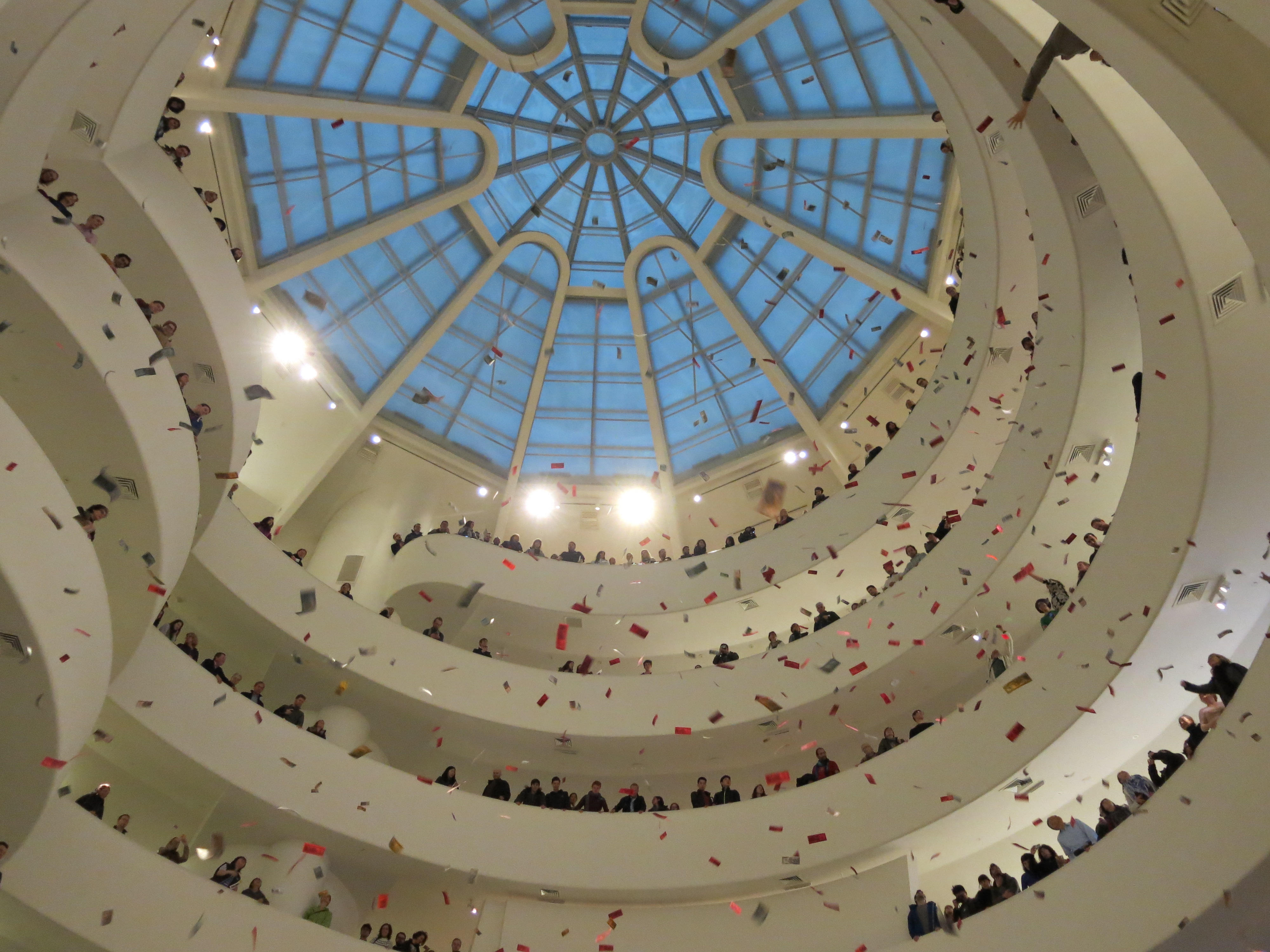
What time is it on the clock of the world?
—Grace Lee Boggs
We amplify a cry reverberating across the globe. From Istanbul and Sao Paulo to New York and London, the proliferation of direct actions is disrupting business as usual at elite cultural institutions: #BlackLivesMatter at the Museum of Natural History, climate protests at the Tate Modern and the Metropolitan Museum of Art, collective pressure for boycott at Haifa’s Technion, worker solidarity disruptions at the Guggenheim Museum NYC, to name only a few.
We now see a diversity of tactics being employed. At times, uninvited assemblies inside museums are announced. At other times the unexpected occurs, unheralded. Actions take aim at a range of targets: labor exploitation, white supremacy, the capture of public space, climate injustice, gentrification, police violence, Israeli apartheid, rape and sexual assault, and more. They are beautifully disruptive within their own arenas of concern. But these concerns are also connected.
We know that by generating narratives in the media, actions can either have deeply transformative potential, or they can reinforce existing norms and power relations. They can either accept the limits of a given context—and implicitly affirm them—or they can change the nature of that context altogether.
We believe that a shift is beginning to occur.
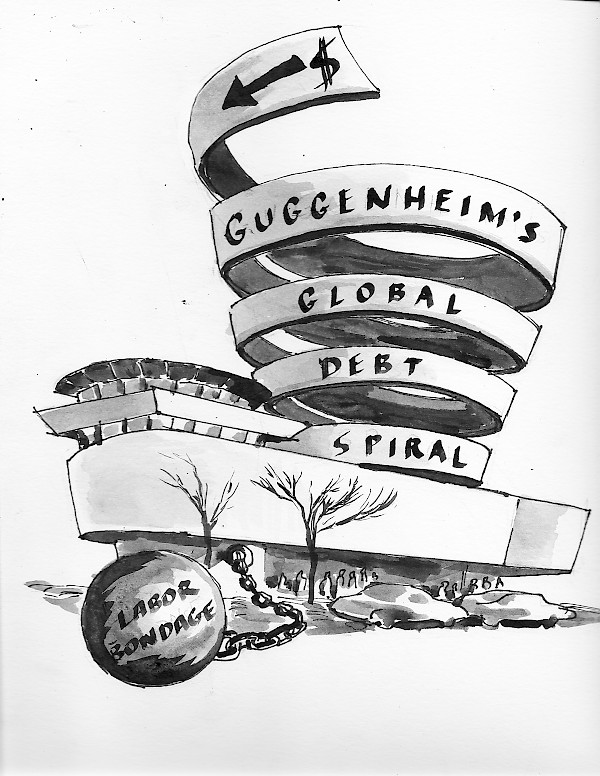
We are living in times dominated by a global ultra luxury economy. This economy masks the theft of public space, the dispossession of citizens’ rights, the abuse of workers, the ruthless extraction of debt revenue, and the propagation of seeds of more racism and violence everywhere. We act to strike the global ultra luxury economy in the interests of making a new space of imagination, one that builds power with people and facilitates the re-arrangement of our own desires in the struggle for justice and freedom.
We are the Global Ultra Luxury Faction (G.U.L.F.). Our name aggressively reflects back to the actually existing art world its true nature: a spectacular subsystem of global capitalism revolving around the display, consumption, and financialization of cultural objects for the benefit of a tiny fraction of humanity, namely, the 1%.
We are cultural workers. We are students, teachers, thinkers, makers, painters, writers, musicians, and more. We recognize and use our privilege to speak out but must always be wary of reproducing the privilege of our location. We work with the imagination and the senses, with hearts and minds, with bodies and voices. We recognize that our work, our creativity, and our potential are channeled into the operations and legitimization of the system. We work—often precariously—as both exploiters and exploited, but we do not cynically resign ourselves to this morbid status quo. We will not allow our songs to become ashes, or our dreams to become nightmares. We see our proximity to the system as an opportunity to strike it with precision, recognizing that the stakes far exceed the discourses and institutions of art as we know them.

We are living, working, and creating in an expanded field of empire. This field is marked by mortal crises—crises of finance resulting in gaping inequality, of climate, of dispossession and displacement, of poverty and neocolonialism in all its forms, of state violence and creeping fascism, and always of patriarchy. But this field is also traversed by freedom struggles, from the striking workers in Abu Dhabi and Dubai to the insurgents in Palestine, Ferguson, Athens, and beyond. G.U.L.F. itself emerged, in part, from the occupation of Wall Street. There, inspired by uprisings in Tunisia, Egypt, Greece, and Spain, we bypassed the institutions of a corrupted representative democracy. We put our bodies directly on the line at the symbolic doorstep of global capital. Wall Street is an abstract space, everywhere and nowhere at once. By de-occupying it, we created space for collective powers to surge forth and for struggles to connect with one another. Walking together, we have asked questions. How do we live? What is freedom? What does solidarity look like? What role can art play?
We target both global systems and local conditions at once. G.U.L.F. names an overarching system, but it also evokes a specific location which exemplifies that system in its most spectacular form: the oil sheikdoms of the Persian Gulf. These states are the supreme recreational playground for the global 1%. Artistic and educational institutions from New York to Paris have eagerly contributed their brands to the development of the de luxe cityscapes of the Emirates. We see monuments to “culture” woven into a monstrous assemblage of fossil fuels, financial power, and imperial geopolitics. Holding up the pyramid, bearing the weight of the entire edifice, are the legions of workers from Bangladesh, India, Pakistan, Nepal, Philippines, Sri Lanka, and most recently, Ghana and Nigeria, who seek dignity and a better future for their families. They are drawn to the Gulf by economic precariousness in their home countries, and often end up bonded to their work through debt. Many of these workers have been at the forefront of struggles for wages and labor reforms that challenge the very terms of Gulf petro-capitalism, itself embedded in global flows of capital and labor. The global cultural brands setting up in Abu Dhabi—Guggenheim, the Louvre, the British Museum, NYU—accept zero responsibility. They insist that the grievances of the workers should be addressed to the government, to the subcontractors, to the middlemen, to the “sending country,” but never to the disinterested heights of the art institutions themselves, which possess a leverage they refuse to acknowledge.
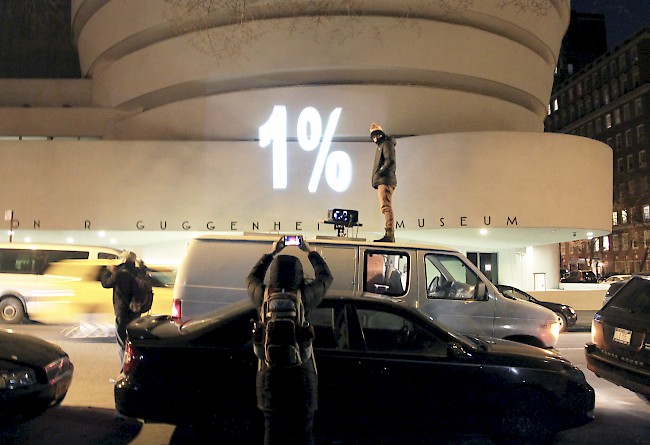
What can be done? Our partners in the Gulf Labor Coalition first brought these conditions of life, work, and debt to public attention. They called for an artists boycott of the Guggenheim Abu Dhabi in particular, demanding that certain conditions on the Island of Happiness be met. Trips have been taken to labor camps and construction zones in Abu Dhabi and Dubai, reports have been written, extensive meetings have been convened. G.U.L.F. brought a new element to this arsenal: artistic direct actions targeting the flagship Guggenheim in New York, designed to incite solidarity, not charity. We have made unsolicited alterations to the building, to the spectator environment, and to the internal protocols of the museum itself, making it into a temporary zone of the marvelous while drawing connections between speculative real estate booms and busts from Manhattan to Abu Dhabi. Banners were dropped, propaganda flung like confetti from the heights of the famous spiral; voices thundered and echoed throughout the rotunda, police were called in to secure the museum as it shut down. We have disfigured the Guggenheim’s corporate brand and magnified the pressure on the museum’s trustees to accept responsibility for the human misery at the bottom of the subcontracting chain.
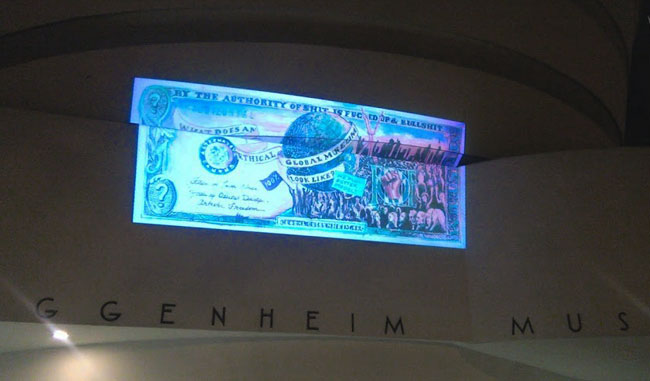
When we act in New York—the capital of the global art world and global media alike—we perform on an outsized stage, and can amplify many voices, especially those that go unheard on Saadiyat Island. How do we understand the connection between the struggles of the UAE’s migrant workers and our own struggles? Why do we regard the liberation of these migrant workers as a precondition of our own liberation? We do not imagine the workers as victims to be saved, but rather as fellow human beings whose freedom is bound up with our own. We have connected with their plight because our own dignity depends on it. Our liberation is either collective or it is nonexistent, so we assail the Guggenheim in New York because it is our gateway into a larger struggle. When we proclaim solidarity, we do not ignore very real differentials of conditions, temporalities, experiences, power, and privilege between ourselves and the migrant workers. We hold on to the specificities of struggle because we understand that history is more awesome than good will. We will not be solidarity tourists. Spectacular actions are necessary yet insufficient on their own. How do we sustain solidarity?
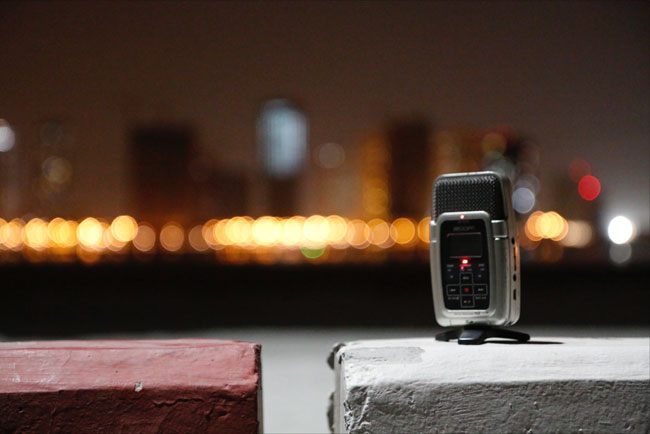
We imagine escalation—at the Guggenheim and beyond. The Guggenheim has been for us an urgent target in its own right. But it has also been a testing ground, a laboratory of learning, training in the practice of freedom, with ramifications far beyond the museum itself. Even if the Guggenheim Foundation trustees accede to the demands of the Gulf Labor Coalition and take independent action to protect the rights of workers—or even to abolish their debts—our work will not be over. Saadiyat Island will still stand as a challenge and a target, along with every other cultural stockpile designed to embellish the lives of the ultra-luxury elite at the expense of the lives of the great majority—especially the lives of black and brown people, who are systemically devalued and rendered disposable under carceral neoliberalism. The workings of the art world have long been bound up with the fine art of gentrification—the by now formulaic intertwining of culture-driven development, realty speculation, and enclave policing that disciplines and displaces lower-income populations from urban neighborhoods. On Saadiyat Island, we see these components in a slightly different, but fundamentally related, combination—brown bodies in accommodations that resemble detention camps, toiling under debt bondage and brutal law enforcement to build a real estate paradise for a light-skinned overclass.
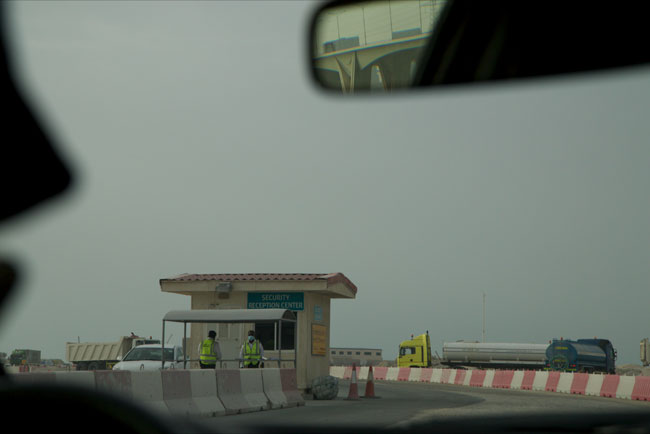
We who believe in freedom cannot rest. The ultra-luxury economy is deeply racialized, locally and globally. In the Gulf, Americans and Europeans doing business are called expats, whereas people constructing and maintaining these surreal cities in the desert are called migrant workers. Actions within and against this economy must make the struggle against racism and white supremacy as an essential component. This extends to the occupation, exploitation, and ethnic cleansing characteristic of Israeli policy—indeed, a global cultural boycott of institutions connected to Israeli apartheid is well within our reach. Boycotts, strikes, pickets, die-ins, occupations, web hacks, media hijacks … whatever the combination of tactics, our actions are at once oppositional and abundantly creative. As we disrupt and refuse the role that art now plays in the normal functioning of a global system that propagates racism and inequality in its shadows, we make space for something new to come into the world. The heart of this new culture is solidarity and human dignity. From acting we learn a new way of thinking. Let each action be an opportunity to test, to unlearn, and to train in the practice of freedom. Let us expand our analysis, deepen our struggles, and reimagine together what art can be as a force of collective liberation and international solidarity.
×
All photographs courtesy of G.U.L.F.


